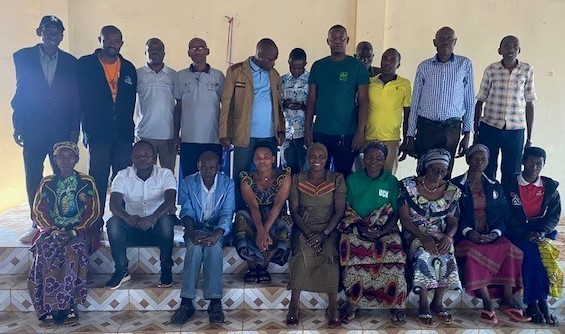The October 2024 workshop in Ntui assessed the progress of CANALLS trials, gathered feedback from farmers, and discussed agroecology principles and project goals.
On October 14th and 15th, 2024, cocoa farmers, leaders of local farming organizations, government representatives, scientists, and other key players in the cocoa value chain gathered in Ntui ALL for the third phase of the co-creation workshop. The workshop was an important opportunity to review the progress of the ongoing CANALLS trials and discuss their implementation by the farmers.
The main goals of the workshop were:
- To understand how well farmers and other stakeholders understood the ongoing trials.
- To evaluate the progress of the trials being conducted on the ground.
- To gather feedback from farmers on the impact of the trials, challenges they’ve faced, and ideas for improving or expanding the practices being tested.
Workshop Activities
The workshop included several key activities:
- Presentations and discussions to remind participants of the workshop’s purpose.
- Field visits to the plots where participants could see firsthand the trials being conducted.
- Surveys to gather feedback on how farmers and stakeholders perceive the trials.
- A discussion on the broader goals of the CANALLS project and the principles of agroecology.

A Closer Look at the Trials
The workshop involved visits to two key farming plots:
- A “mother plot” located in the forest zone (in Bivouna village).
- A “baby plot” in the transition zone (in Bindalima village).
These plots were chosen carefully based on the following factors: (i) the spirit of collaboration of the farmers/stakeholders, (ii) farm accessibility, (iii) ecological zone (Forest, savannah, and transition zones), (iv) trials (biopesticides and shade/foliar fertilization trials), and plot type (mother and baby plots).

What We Learned
The survey results and group discussions provided valuable insights:
1. High interest and understanding:
Farmers and other stakeholders expressed strong interest in the trials, and they demonstrated a good understanding of the methods being used.
2. Familiarity with fertilization trials, but not biopesticide trials:
While farmers were comfortable with the fertilization trials and the inputs being used, they had less familiarity with the biopesticide trials. Many also raised concerns about the availability of biopesticides, which could affect the long-term adoption of this practice.
3. Willingness to continue the trials:
Farmers showed enthusiasm for the idea of continuing these trials in the future, provided the necessary inputs are available and the yield results are promising.
4. Challenges with Technical Language and Note-Taking:
Some farmers found the technical language used to explain the trials confusing and mentioned that taking notes during the workshops was challenging. They would prefer more frequent oral feedback.
5. Increased Knowledge of Agroecology:
By the end of the workshop, farmers had a better understanding of the goals of the CANALLS project and the concept of agroecology.
Looking Ahead
This workshop was a valuable step in the ongoing collaboration between farmers, researchers, and other stakeholders in the cocoa sector as part of the CANALLS project. It highlighted both the progress being made and the challenges that remain. The feedback from the participants was crucial in refining the trials and ensuring they meet the needs of the farmers involved.



